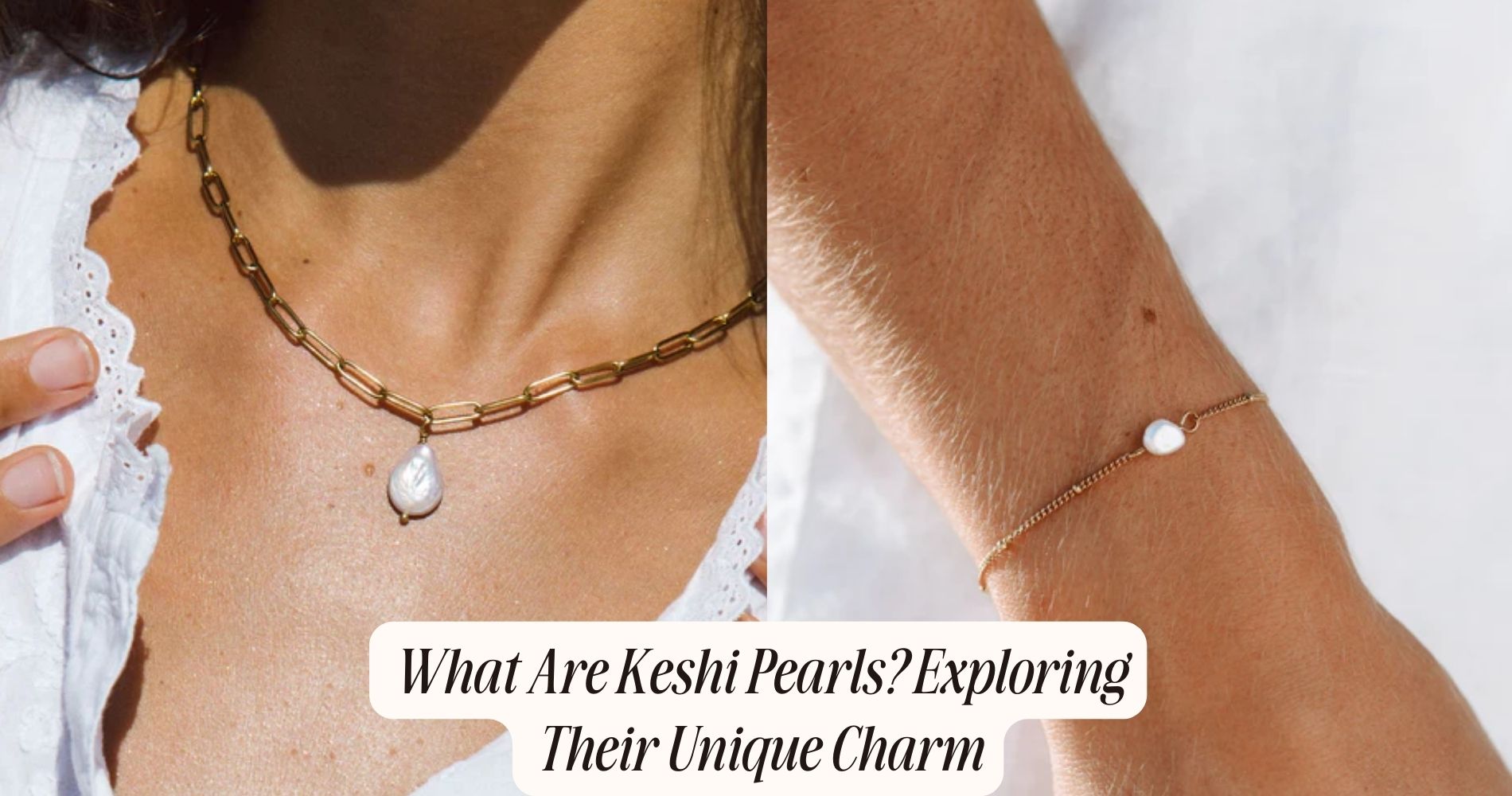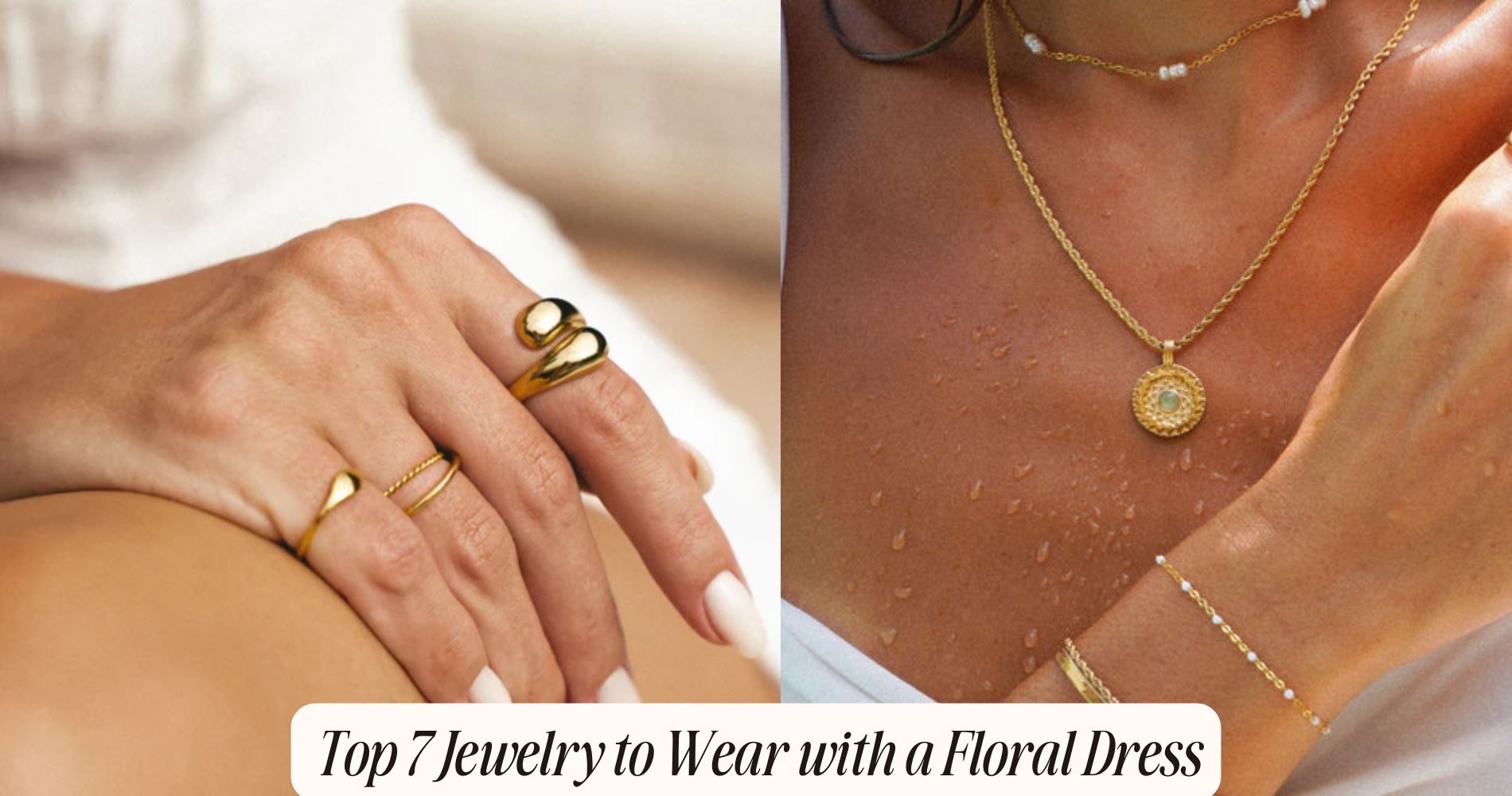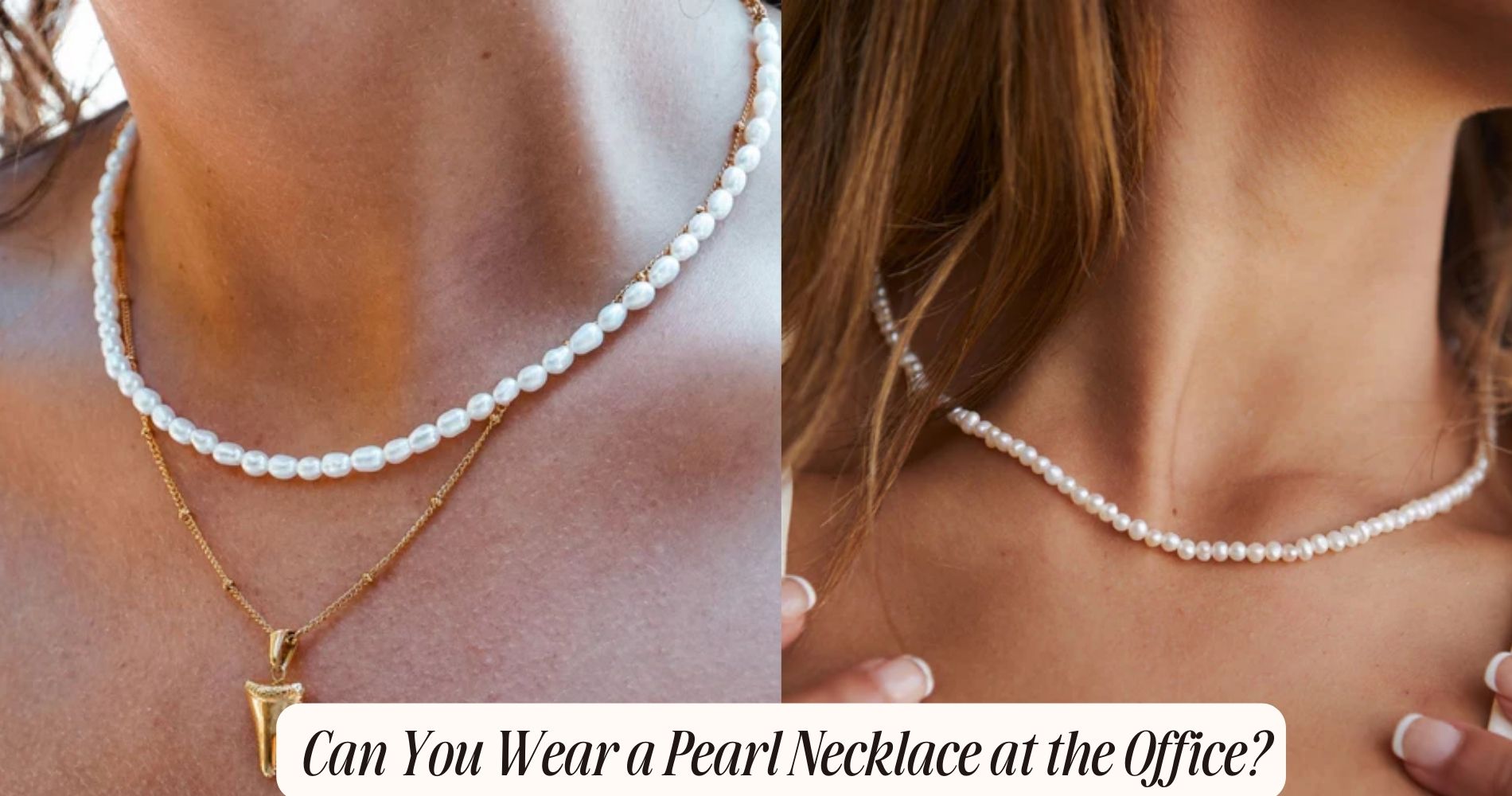
What Are Keshi Pearls? Exploring Their Unique Charm
What are keshi pearls? Keshi pearls are extraordinary gems formed naturally from excess nacre, giving them their unique, free-form shapes and radiant luster. Unlike traditional pearls, they lack a nucleating bead, which results in their irregular and one-of-a-kind appearance. Available in a stunning array of colors, from soft pastels to vibrant hues, each keshi pearl reflects the oyster's environment and experiences, making it a true treasure. Their asymmetrical forms and organic lines symbolize individuality and creativity, enchanting jewelry enthusiasts everywhere. If you're curious about their value and how to care for them, there's so much more to uncover in our Freshwater Pearls Jewelry collection.
What Are Keshi Pearls?
Keshi pearls are unique, non-nucleated pearls formed when an oyster produces an excess of nacre, resulting in stunning gems that captivate with their natural luster and irregular shapes. Unlike traditional pearls, which develop around a nucleus, keshi pearls emerge purely from the oyster's secretions, making each one a true masterpiece of nature. Their history traces back to the late 19th century, when Japanese pearl farmers first discovered these lovely gems, initially as byproducts of cultured pearl farming.
Today, keshi pearls symbolize purity and wisdom, embodying the essence of transformation and resilience. You'll find them in various colors, from bright whites to soft pastels, each reflecting the unique environment of its origin. Their organic shapes and textures add an intriguing flair to any piece of jewelry, making them highly sought after by collectors and fashion enthusiasts alike.
When you wear keshi pearls, you're not just sporting a piece of jewelry; you're embracing a rich history and a symbol of natural beauty. Their charm lies in their uniqueness, reminding you that true elegance often comes from imperfections.
The Formation Process
When you explore the formation of Keshi pearls, you'll discover the fascinating differences between natural and cultivated processes.
You'll learn how nucleation techniques play an essential role in their creation, shaping each pearl's unique characteristics.
This journey into the world of Keshi pearls reveals not just their beauty, but also the intricate methods behind their formation.
Natural Vs. Cultivated Formation
Natural and cultivated pearls form through distinct processes, each revealing the unique beauty and characteristics that define these exquisite gems.
In natural formation, pearls develop without human intervention, creating a remarkable story of endurance. An irritant, like a grain of sand, enters an oyster, triggering a defense mechanism. The oyster coats the irritant with layers of nacre, resulting in the stunning organic gem you admire.
On the other hand, cultivated formation involves human influence to initiate the process. In this method, technicians carefully introduce a nucleus, often made of mollusk shell, into the oyster. The oyster then responds by layering nacre around this nucleus, producing a pearl. While both types share the same beautiful luster and iridescence, cultivated pearls often exhibit more uniform shapes and sizes due to controlled conditions.
You'll find that natural pearls are rarer and often more valuable, as their formation process is unpredictable. In contrast, cultivated pearls are more widely available, allowing you to enjoy their beauty at a range of price points.
Understanding these two formation processes helps you appreciate the charm and allure of Keshi pearls even more.
Nucleation Techniques Explained
Understanding the nuances of nucleation techniques reveals how cultivated pearls, including beautiful Keshi varieties, come to life through meticulous human intervention in the formation process. In pearl cultivation, nucleation methods are essential; they determine how the pearls develop inside the mollusks.
Typically, the process begins with the careful insertion of a small bead or piece of mantle tissue into the oyster. This act triggers the oyster's natural defense mechanism, prompting it to secrete layers of nacre around the irritant. The specific nucleation method used can greatly influence the final shape and size of the pearl.
For Keshi pearls, however, the nucleation process can be a bit different. These pearls often form when an oyster rejects the inserted bead, leading to the creation of a pearl made entirely of nacre, resulting in their unique luster and characteristics.
Unique Shape Characteristics
Exploring the formation process of Keshi pearls reveals their distinct shapes, which arise from the oyster's unique response to the absence of a bead during nucleation. Unlike traditional pearls that form around a bead, a Keshi pearl develops when an oyster secretes nacre in reaction to irritation, resulting in irregular, free-form shapes. This natural process allows for an incredible variety of sizes and contours, making each pearl a unique piece of art.
As you admire Keshi pearls, you'll notice their stunning aesthetics, which often include asymmetrical forms and soft, organic lines. These characteristics not only enhance their beauty but also contribute to their cultural significance across various societies. In many cultures, these pearls symbolize individuality and authenticity, making them highly sought after for jewelry and adornments.
Each Keshi pearl tells a story, reflecting the oyster's environment and experiences. Their unique shapes resonate with those who value nature's artistry, celebrating both the pearl and the journey it took to form. By choosing Keshi pearls, you embrace a piece of nature that's as unique as you are, enriching your collection with both beauty and meaning.
Characteristics of Keshi Pearls
When you explore the characteristics of Keshi pearls, you'll notice their fascinating formation process and how it impacts their unique shapes and sizes.
Each pearl boasts a distinct luster and surface quality, making them truly one-of-a-kind treasures.
Get ready to appreciate the intricate beauty that sets Keshi pearls apart from conventional varieties.
Formation Process Explained
Have you ever wondered how Keshi pearls form? These unique gems arise when a mollusk rejects a bead inserted for cultivation, leading to an organic process that results in lustrous, irregularly shaped pearls. This fascinating formation process directly ties to the Keshi pearl origins, where the mollusk's natural instinct takes over, allowing it to produce pearls without the influence of human intervention.
Unlike traditional cultured pearls, which rely on a bead nucleus, Keshi pearls form entirely from the mollusk's secretions of nacre. This means that every pearl is a true reflection of nature's artistry, showcasing a range of colors and luster that can't be replicated.
The Keshi pearl history dates back to the 1970s when they began gaining popularity in the jewelry market. As more people discovered their unique beauty, the demand surged. Today, you'll find these pearls celebrated for their individuality, making each piece a one-of-a-kind treasure.
Unique Shapes and Sizes
Keshi pearls are celebrated for their enchanting variety in shapes and sizes, making each one a distinct piece of natural art. Unlike traditional pearls, which tend to be round, keshi pearls can be found in an array of organic forms—ranging from baroque and teardrop to oval and irregular shapes. This diversity adds a unique charm that fascinates jewelers and collectors alike.
As you explore keshi pearl history, you'll discover that these intriguing gems were formed unintentionally, as they result from the oyster's natural process of creating nacre. This history of serendipity contributes to their allure, as each keshi pearl tells its own story.
In addition to their fascinating shapes, keshi pearls carry deep symbolism. They're often associated with transformation and new beginnings, making them meaningful gifts for those starting on significant life changes.
Luster and Surface Quality
The luster of keshi pearls fascinates with its radiant sheen, often displaying a remarkable depth and iridescence that enhances their unique beauty. When you compare keshi pearls to other types of pearls, their luster stands out, offering a more vibrant glow due to their high nacre content. This quality gives them a certain allure that can elevate any piece of jewelry.
In terms of surface texture, keshi pearls can vary greatly, with some showcasing a smooth, flawless finish while others might exhibit subtle imperfections, adding to their character. These natural variations contribute to their charm, making each pearl a unique treasure. You'll find that this interplay of luster and surface quality is what draws many collectors and jewelry enthusiasts to keshi pearls.
Whether you're wearing them in a stunning necklace or simply admiring them in a display, the luster comparison with other pearls highlights their distinctiveness. Their exceptional surface texture, combined with the enchanting shine, makes keshi pearls a popular choice for those seeking something truly special.
Embrace their unique qualities, and you'll appreciate why they're so cherished in the world of fine jewelry.
Color Variations and Luster
You'll discover that keshi pearls come in a stunning array of colors, each with its own unique luster that enhances their natural beauty. These pearls can range from soft pastels like lavender and blush to vibrant hues such as deep blue and rich gold. Each color carries its own symbolism; for instance, white represents purity, while black often signifies sophistication and mystery.
The luster variations in keshi pearls can be equally mesmerizing. Some pearls exhibit a mirror-like shine, reflecting light beautifully, while others might have a more subtle, satin-like finish. This diversity in luster adds depth to the pearls, making them even more enchanting.
When you choose a keshi pearl, consider how its color and luster resonate with you personally. Whether you're drawn to the serene calmness of a pale pink or the bold statement of a dark green, each choice tells a story. The interplay between color symbolism and luster variations not only enhances the aesthetic appeal but also adds emotional significance to your jewelry.
Comparison With Traditional Pearls
While keshi pearls captivate with their vibrant colors and unique luster, they also present a distinct contrast to traditional pearls, which are typically round and often exhibit a more uniform appearance.
Traditional pearls, cultivated mainly in oysters, have a long keshi pearl history tied to their classic charm and elegance. They're celebrated for their smooth surfaces and predictable shapes, making them a staple in fine jewelry.
In contrast, keshi pearls are the byproducts of the pearl farming process, formed when an oyster rejects a bead nucleus. This results in irregular shapes and a more organic aesthetic. Their uniqueness not only enhances their appeal but also carries cultural significance in various societies. Many cultures consider keshi pearls to symbolize individuality and creativity, reflecting the beauty of nature's imperfections.
When you wear keshi pearls, you embrace a piece of jewelry that's not just beautiful but also rich in history and meaning. Their individuality sets them apart, allowing you to showcase a personal style that traditional pearls simply can't replicate.
Jewelry Styles Featuring Keshi Pearls
When it comes to showcasing the unique beauty of Keshi pearls, jewelry options abound.
You'll find stunning Keshi pearl necklaces that effortlessly elevate any outfit, as well as eye-catching earrings that add a touch of elegance to your look.
Let's explore how these versatile gems can transform your jewelry collection.
Keshi Pearl Necklaces
Keshi pearl necklaces showcase the unique beauty and luster of these organic gems, effortlessly elevating any outfit with their distinctive shapes and iridescent colors.
These necklaces often feature a mix of sizes and hues, creating a stunning visual appeal that captures attention. As you explore current keshi pearl trends, you'll find that layering different lengths and styles can enhance your look, offering versatility for both casual and formal occasions.
When it comes to keshi pearl care, it's important to treat these gems with kindness. Store your necklace in a soft pouch to avoid scratches, and clean it gently with a damp cloth after wearing. Avoid exposing your keshi pearls to harsh chemicals or excessive moisture, as this can dull their natural luster.
Whether you're drawn to the enchanting irregular shapes or the shimmering colors, a keshi pearl necklace is a timeless piece that adds charm to your jewelry collection.
Embrace the elegance of these pearls and enjoy the compliments that come your way as you wear this unique adornment. Your style will reflect the mesmerizing allure of keshi pearls, making a memorable statement wherever you go.
Earrings With Keshi Pearls
Earrings featuring keshi pearls offer a striking combination of elegance and individuality, making them a must-have accessory for any jewelry lover.
These keshi pearl earrings stand out with their irregular shapes and lustrous sheen, adding a touch of sophistication to any outfit. You'll find that each pair showcases a unique earring design, reflecting the natural beauty of the pearls themselves.
Whether you prefer simple studs, dangling designs, or statement hoops, keshi pearls elevate your style effortlessly. Imagine wearing a pair of delicate drop earrings adorned with keshi pearls that catch the light with every movement. They create a stunning focal point, drawing compliments wherever you go.
Moreover, keshi pearls come in various colors, from classic white to soft pastels and deep hues, giving you the freedom to express your personal style. Mixing these exquisite pearls with other materials, like gold or silver, results in unique earring designs that blend modern trends with timeless elegance.
Caring for Keshi Pearls
To keep your Keshi pearls looking stunning and vibrant, regular care and gentle handling are essential.
Start by using soft, lint-free cloths to wipe your pearls after each wear. This simple cleaning method helps remove oils and dirt, ensuring they maintain their luster. If needed, you can gently wash them with mild soap and lukewarm water, but avoid soaking them, as excess moisture can damage the nacre.
When it comes to storage tips, always keep your Keshi pearls in a cool, dry place. Use a soft pouch or a separate compartment in a jewelry box to prevent them from scratching against other pieces.
Avoid exposing them to harsh chemicals or extreme temperatures, as these can affect their beauty.
Frequently Asked Questions
Are Keshi Pearls Sustainable or Environmentally Friendly?
Keshi pearl farming can be sustainable, as it often promotes marine biodiversity and reduces environmental impact. By supporting responsible practices, you help guarantee a healthier ecosystem while enjoying the beauty of these unique pearls.
Can Keshi Pearls Be Artificially Created or Are They Always Natural?
You can't create artificial keshi; they always stem from natural processes. Keshi pearl origins lie in oysters rejecting the implanted nucleus during culturing, leading to unique, organic creations that showcase nature's artistry and beauty.
How Do Keshi Pearls Compare to Other Types of Cultured Pearls?
When you compare Keshi pearls to other cultured types, you'll notice their unique characteristics, like irregular shapes and high luster. Their rarity enhances Keshi pearl value, making them a sought-after choice in jewelry.
What Is the History Behind the Discovery of Keshi Pearls?
You'll find that Keshi origins trace back to the late 19th century. Their historical significance lies in their accidental formation during pearl cultivation, showcasing nature's unpredictability and leading to a unique, sought-after gem in today's market.
Are There Any Specific Allergies Related to Keshi Pearls?
You might experience keshi pearl allergies or sensitivities, though they're rare. Always test for reactions when trying new jewelry. If irritation occurs, consider consulting a dermatologist to guarantee your comfort and skin health.
Conclusion
In the world of pearls, keshi pearls stand out with their unique charm and beauty. Their organic formation and stunning luster make them an enchanting choice for jewelry lovers.
Whether you're drawn to their distinct shapes or the vibrant colors they come in, keshi pearls offer a touch of elegance that's hard to resist. By understanding their characteristics and caring for them properly, you can enjoy these exquisite gems for years to come.
Immerse yourself in the allure of keshi pearls today!
























Leave a comment
This site is protected by hCaptcha and the hCaptcha Privacy Policy and Terms of Service apply.